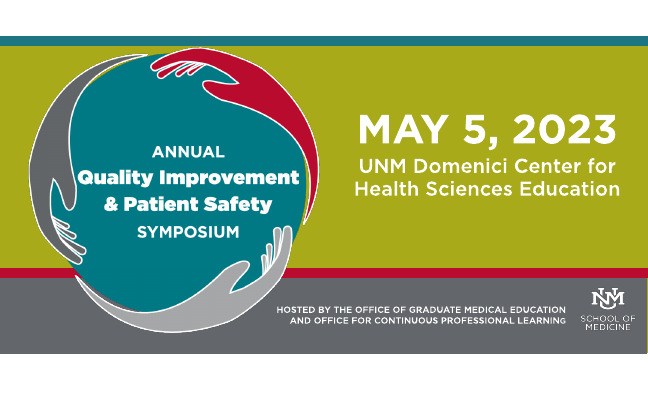Document Type
Poster
Publication Date
3-6-2020
Abstract
Introduction: Access to HIV screening and care may be limited in resource-constrained health care settings. The CDC recommends routine HIV screening for all patients aged 13-64 years, unless the prevalence of undiagnosed HIV in that population has been documented to be
New Mexico is ranked 34th in the US for the rate of HIV diagnoses made per year—among the lowest of all 50 states. Meanwhile, NM is ranked 4th for chlamydia, 22nd for gonorrhea, and 20th for syphilis [3]. This discrepancy in sexually transmitted infection rates suggests the possibility of underdiagnosis of HIV infection in NM and, as a result, underestimation of the actual HIV prevalence in the state.
As part of an initiative to improve HIV preventive care for UNMH Emergency Department (ED) patients evaluated after a sexual assault [4], we implemented rapid HIV screening that was also available to all UNMH ED patients at risk for HIV, regardless of the reason for their ED visit. This initiative had the secondary benefit of improving HIV screening rates in the ED.
Materials/Methods: Two domains for broad infrastructural improvement were identified: (1) the availability of rapid HIV screening in settings where this test could impact decision-making and (2) the connection to outpatient follow-up care for patients at high risk for or diagnosed with HIV. Barriers to improvements included the lack of a mechanism to perform confirmatory testing for all positive rapid screens and the lack of streamlined access to follow-up outpatient care. Through extensive collaboration with stakeholders throughout the health system, we implemented rapid HIV screening in the UNMH ED, a reflex laboratory confirmatory test, and nurse-driven protocols for follow-up of confirmatory testing. In collaboration with partners at UNM and in the community, we established a network of HIV care clinics and a 24/7 connection to care phone line to improve access to care for patients diagnosed with HIV infection. A REDCap “tracker” tool was devised to allow outpatient clinics to report, without any identifiable patient information, whether they saw patients in follow-up.
Results: This project resulted in several improvements: (1) Rapid, point-of-care HIV screening is now available in the UNMH adult and pediatric EDs and has subsequently been expanded to UNMH Labor and Delivery. (2) Reflex laboratory confirmatory testing for any positive rapid HIV screen has been implemented, and a nurse-driven protocol for follow-up of these results is in place. (3) A 24/7 Truman Health Services “connect-to-care” phone line is available to providers at UNMH and in the surrounding community to link point-of-care evaluations with outpatient follow-up for patients with a new HIV diagnosis. (4) A network of seven follow-up clinics for HIV treatment and ten follow-up clinics for HIV preventive care in the Albuquerque area is now available to UNMH patients. Utilizing the REDCap “tracker” tool, we can confirm that patients are following up in outpatient clinics.
Conclusion: The project was successful in establishing rapid, point-of-care HIV testing in the ED and in streamlining follow-up care for patients newly diagnosed with HIV. The success of the ED screening initiative led to expansion of the rapid testing elsewhere at UNMH. Future plans are in development to quantify the change in HIV screening rates resulting from these improvements using an interrupted time series study design.
References:
1. Branson, Bernard, M, and et al. “Revised Recommendations for HIV Testing of Adults, Adolescents, and Pregnant Women in Health-Care Settings.” CDC. https://www.cdc.gov/mmwr/preview/mmwrhtml/rr5514a1.htm
2. Moyer, VA. “Screening for HIV: U.S. Preventive Services Task Force Recommendation Statement.” Ann Internal Medicine 159, no. 1 (2013): 51–60.
3. “National Center for HIV/AIDS, Viral Hepatitis, STD, and TB Prevention. Centers for Disease Control and Prevention. New Mexico - State Health Profile,” https://www.cdc.gov/nchhstp/stateprofiles/pdf/New_Mexico_profile.pdf.
4. Saadatzadeh T, Wilson CG, Salas NM, Walraven C, Sarangarm P, Crandall CS, Crook J, Sarangarm D, Yaple C, Stafford A, Page K, Carvour ML. The IN-STEP Project: Improving Access to HIV Prevention for Patients Evaluated After Sexual Assault Using a Multidisciplinary, Patient-Centered Approach. Poster presented at University of New Mexico Health Sciences Center Quality Improvement and Patient Safety Symposium in February 2019, Albuquerque, NM and the New Mexico HIV & HCV Update Conference in April 2019, Albuquerque, NM. Oral presentation by T. Saadatzadeh at the American College of Physicians Internal Medicine Annual Meeting in April 2019, Philadelphia, PA.
Recommended Citation
Pek, Zachary; Tirajeh Saadatzadeh; Natalie Mariam Salas; Christopher G. Wilson; Charles Yaple; Carla Walraven; Preeyaporn Sarangarm; Cameron S. Crandall; Joy Crook; Dusadee Sarangarm; Amanda Stafford; Kimberly Page; and Martha L. Carvour. "Expanding HIV Screening in the UNMH Emergency Department." (2020). https://digitalrepository.unm.edu/hsc_qips/25


Comments
Presented at the University of New Mexico Health Science 2020 Annual Quality Improvement and Patient Safety Symposium